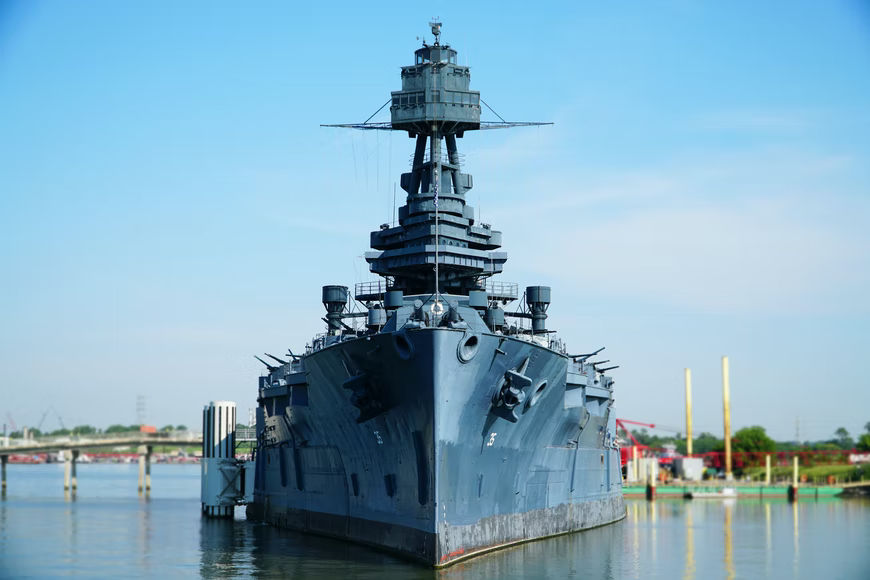Russia has announced that the Moskva missile cruiser, the flagship of its Black Sea Fleet, sank while being hauled to port after a fire and explosions involving ammunition stowed onboard.
Ukraine claims that a missile strike launched from the coast broke open the huge Soviet-era ship’s hull, sealing the Moskva’s doom. That version of events has not been validated by Russia’s defence ministry. News agency Reuters said it was unable to confirm either side’s claims.
Also read: Russia threatened US with ‘unpredictable consequences’ on weapons delivery to Ukraine: Report
Here’s what we do know, as well as what the sinking means (and does not mean) for Russia’s military readiness:
What capabilities does Russia lose as a result of the sinking?
Russia possesses powerful air defence systems in Crimea, which it seized from Ukraine in 2014, but the Moskva was capable of providing long-range and mobile air defence protection for the whole Black Sea Fleet, as well as serving as a floating command and control centre. Its absence weakens the fleet’s air defences, especially on longer-range operations.
Where did the crew go?
The ship’s crew of roughly 500 sailors was successfully evacuated to other ships, according to Russia, before being returned to their home port of Sevastopol in Crimea on Friday. Ukraine has indicated that there are likely to have been fatalities, but Russia has yet to comment.
Also read: Will Russia use nuclear weapons in war with Ukraine: Explained
Will their loss affect the outcome of the Ukraine conflict?
Unlikely, but Britain’s Ministry of Defence believes its loss will force Russia to reconsider its Black Sea military posture. According to US officials who spoke on the condition of anonymity, while the sinking would have a symbolic impact and may raise worries about Russia’s longer-term naval capabilities, it would be unlikely to have a significant impact on the path of the battle. So far, the Russian fleet has not played a significant role.
According to one US official, Russia has only used its vessels sparingly, to carry out rare strikes and resupply soldiers in the south. Russia retains naval control in the region, and the Moskva is ready to kill hostile ships at sea, while Ukraine’s navy is in shambles.
Will Russia’s navy now change its operating model, and does it make a difference?
Yes, but the difference isn’t expected to be considerable. After the fire on the Moskva began, which US authorities believe was the result of a Ukrainian attack, around five Russian vessels in the northern Black Sea moved about 80 nautical miles away from the coast. However, US sources stated that those ships were still capable of carrying out strikes inside Ukraine from that distance and were less likely to be targeted by Ukrainians that were far away from the coast. According to the Institute for the Study of War (ISW), a Washington-based think tank, Ukraine’s capacity to attack Russian warships in the Black Sea may prompt the Russian Navy to deploy extra air defence and other assets for protection.
Also read: Zelensky warns all countries of Putin’s use of tactical nuclear weapons
Was the Moskva earmarked for a participation in the ongoing conflict?
It is unclear, but some analysts believe it may have aided a probable Russian amphibious invasion in the Ukrainian port of Odesa, which has yet to occur due to Ukrainian opposition. Its sinking may be viewed as decreasing the likelihood of such an assault and allowing Ukraine to redeploy some of its forces elsewhere in Ukraine.
Can Russia simply replace the capabilities of the Moskva?
No, Russia has two further ships of the same class, Marshal Ustinov and the Varyag, which serve with Russia’s Northern and Pacific fleets. In a time of conflict, Turkey, which controls access to the Black Sea via the Bosphorus, will not allow them to enter.
Was the Moskva equipped with special weapons?
No. It was armed with anti-ship missiles and surface-to-air missiles but lacked Russia’s latest generation Kalibr cruise missiles or hypersonic weapons.
How modern was the ship?
Not at all. It was designed in the 1970s Soviet Union during the Cold War to destroy American aircraft carriers and had been in service for nearly four decades. It required substantial refurbishment and, according to the British Ministry of Defence, will not be operational again until 2021. Despite the refurbishment, some of the gear remained obsolete.
Also read: Russia striking in retaliation of Moskva warship sinking, claims Ukraine Armed Forces: Report
What is the impact on Russian military pride?
The loss is devastating for the Russian military since the ship, despite her age, was a symbol of the Crimean Black Sea Fleet and Russian military pride. If it is destroyed by Ukrainian anti-ship missiles, it will be the largest Russian warship lost in action since 1941, when German dive bombers disabled the Soviet battleship Marat in Kronshtadt harbour. The sinking, whether caused by Ukrainian missile strikes or an accident, “is a major propaganda victory for Ukraine,” according to an ISW assessment. Senior officials in the Black Sea Fleet are expected to lose their careers as a result of the disaster, according to Western diplomats and experts.







